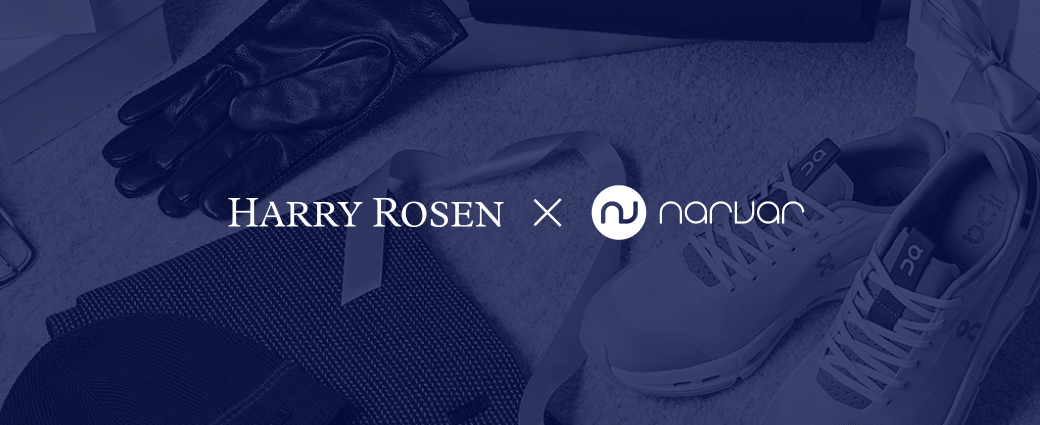
AI-powered delivery date estimates to boost conversion
Give shoppers peace of mind and protect and grow your bottom line
Personalized tracking experiences to build brand loyalty
Returns and exchanges management to mitigate fraud and reward best customers
Proactive communication to drive customer lifetime value
Delivery claim management to tackle fraud and build trust
Consumers Embrace Wellness Brands That Deliver Transparency

Given the sharp uptick in consumer anxiety over the past year, it’s not surprising to see a corresponding increase in the amount of money spent on wellness. The global digital health market is one of the fastest-growing segments of the $3.7 trillion global wellness market, encompassing $368 billion in 2018 and expected to reach $418 billion by 2020.Brands that are most successful have taken advantage of technology to “come clean” while encouraging clean living. They’re creating clever and innovative assets and incorporating the latest social media strategies to drive their brand promises of authenticity and transparency. Let’s take a look at how some brands are positioning themselves as winners in this space.
Enabling a healthier, more conscious lifestyle
According to a 2016 study, 73 percent of consumers say they're willing to pay more for a product that promises total transparency. Thanks to social media and brands that populate their feeds with mission-revealing posts, consumers now have visibility into a brand’s viewpoints and values. If these values reflect their own, consumers will buy. Goop, Glossier, and RxBar know this well. Lifestyle brand Goop promises fans unbiased coverage of a variety of topics while selling a curated selection of lifestyle products for the mindful consumer. Their social giving efforts support their ethical and socially conscious brand values, and include the David Lynch foundation, which brings free transcendental meditation instruction to youth in urban schools, and The Edible Schoolyard Project which incorporates Edible Education lessons into K-12 school core curriculum.Protein bars are popular with health-conscious consumers looking for a energy boost on-the-go, but many are made with less-than-healthy foods. RxBar was founded with the goal of creating a simple and nutritious protein bar. From their homepage plainly stating “This is our product” to their packaging consisting of a bolded ingredients list punctuated with “No B.S.”, RxBar is focused on creating real food for clean eaters.
Online meal kits for conscious eating
Healthy eating can seem like a big time commitment. Health conscious and time-strapped consumers who want to know everything they’re eating are able to go online and purchase a meal kit that meets their dietary specifications, and schedule it to be delivered when convenient for them, including on a recurring set-it-and-forget-it schedule. The sites provide detailed ingredient sources and calorie counts. This all adds up to consumers feeling happy they are making a health-conscious purchase, while checking off a chore from their to-do list. As the trend expands into the supermarket, spending on meal kits is expected to grow 41% this year alone.
The rise of clean beauty
BeautyCounter founder Gregg Renfrew was inspired to launch the brand after learning the EU had banned over 1,400 beauty product ingredients, while the U.S. had only banned 11. BeautyCounter uses technology to educate beauty buffs on the ingredients in the products they’re using and why they matter. BeautyCounter provides a glossary of ingredients they use, explaining what they do and in which products they’re used. They also have a list of common beauty product ingredients they are committed to never using—with explanation. When combined with their advocacy efforts, BeautyCounter is creating as much of a health and wellness movement as they are a beauty brand. Similarly, Sephora has seen that mindful consumers want to be informed of the ingredients and manufacturing processes that go into producing their beauty purchases, and are willing to pay a premium for a brand that gives healthier alternatives. They are meeting this need through their Clean at Sephora curated products both online and in-store.
The tech that builds better customer experience
From these examples, it’s easy to see how a focus on consumer education and transparency—delivered through the Web and social—positively impacts the consumer/brand relationship. In the process of creating well-educated customers, health and wellness brands are also creating a passionate, engaged, and loyal customer base. We’ve examined a number of top health and wellness brands—covering everything from athleisure to medical retail—and will be sharing additional insights into how they are investing in technology to create better customer experiences in future posts. Stay tuned.
























